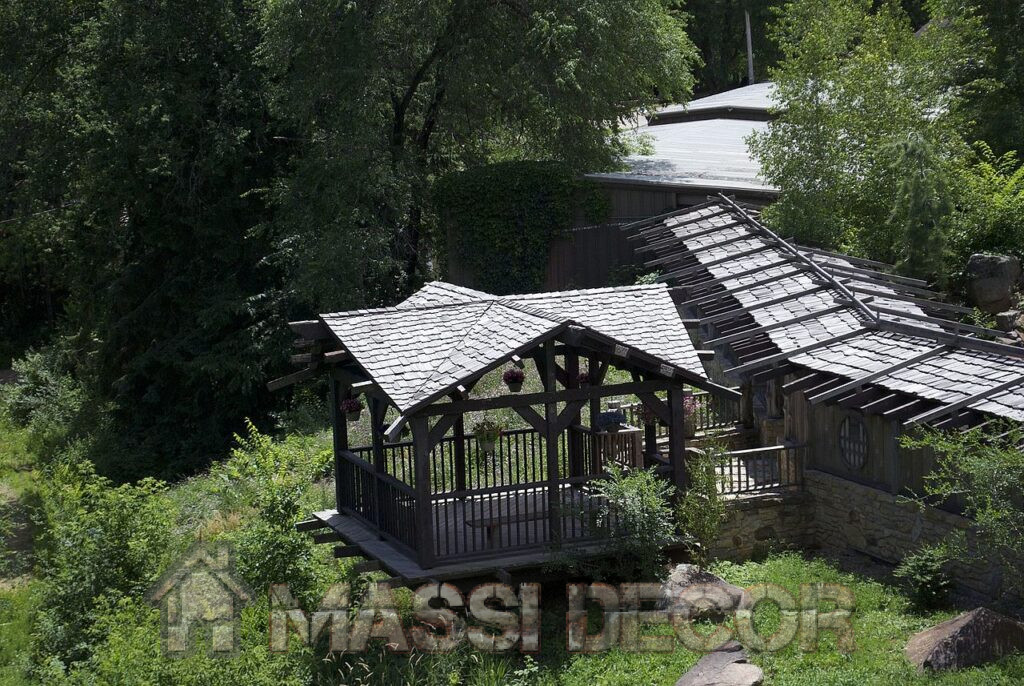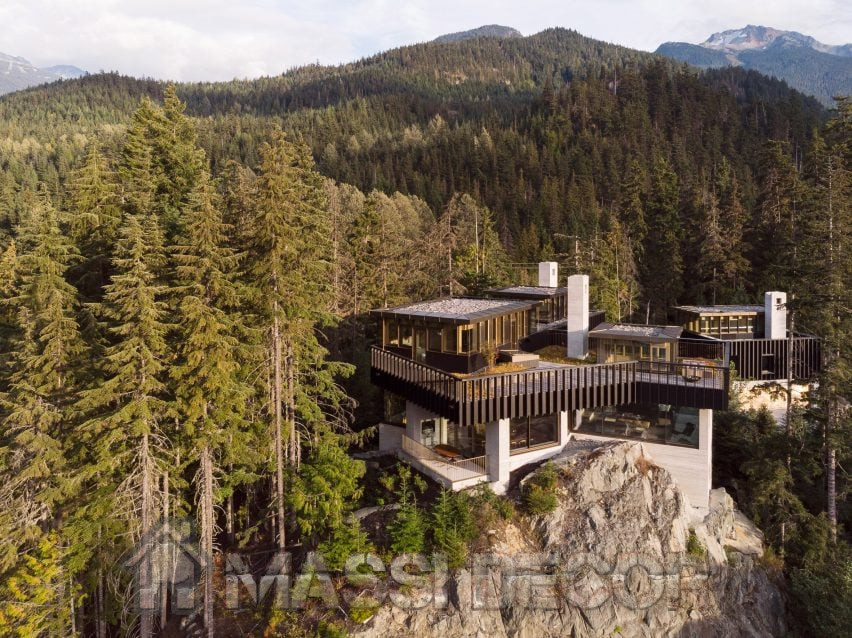Table of Contents
Building Your Dream House on the Rock
Have you ever imagined owning a luxury House on the Rock perched on the edge of a rugged coastal cliff, with sweeping ocean views from every room? I know I have! There's just something so appealing about the idea of a gorgeous house on the rock.
But while building your dream seaside abode may seem idyllic, constructing on such difficult terrain requires careful planning and solid foundations (both literally and figuratively!). Like the wise builder in the parable who constructed his house on rock instead of sand, you’ll need to prepare properly if you want your seaside sanctuary to stand the test of time.
In this article, we’ll explore the pros, cons, costs, and considerations of constructing your own distinctively designed cliffside dwelling. Think of it as Extreme Home Makeover: Coastal Edition. Let’s get started!
"The sea, once it casts its spell, holds one in its net of wonder forever." - Jacques Cousteau
Pro: Incredible Views
The number one draw of building on the water’s edge is the eye-popping scenery. Picture having your morning coffee while gazing out at crashing waves and crying seagulls. Or unwinding at sunset on your deck, cocktail in hand, as you watch the glowing sun sink into the sea. Talk about a Room with a View!
Homes on the cliffs offer some of the most breathtaking vistas money can buy. You’ll enjoy panoramic coastal outlooks from dawn to dusk. Who needs television when you’ve got front-row seats to nature’s greatest show?
Just imagine how peaceful it would feel to fall asleep to the soothing sounds of the tide each night. For ocean lovers, it doesn’t get much better than this.
"The ocean stirs the heart, inspires the imagination and brings eternal joy to the soul." - Robert Wyland
Con: Logistical Challenges
On the downside, constructing a house on rocky terrain right up against the ocean presents some tricky logistical challenges. First, it’s incredibly difficult and expensive to transport building materials down to remote beach sites. You may need to use a crane or helicopter to fly supplies in.
Once the materials are on site, the uneven ground makes laying secure foundations extremely complicated. Only experienced coastal builders are equipped for the task. Poor foundations on unstable land lead to cracks, floods, and in worst-case scenarios, collapse. Don’t be like the foolish builder who constructed on the sand!
Speaking of sand, erosion, and tides pose additional concerns. Houses on the shoreline require special safeguards like bulkheads and seawalls to protect against powerful waves, surges, and storms. Otherwise, your home may wash away with the tide.
“We are tied to the ocean. And when we go back to the sea, whether it is to sail or to watch - we are going back from whence we came.” - John F. Kennedy
Cost Considerations
Given all these hurdles inherent in oceanfront construction, building your house on the rock will come with a hefty price tag. You can expect to pay around 25-30% more compared to luxury homes built on flat, inland lots.
Beyond the initial build expenses, maintenance and insurance also cost more for coastal living. Your cliffside castle will need frequent upkeep and weatherproofing to withstand the harsh marine environment. Ensuring an at-risk beach house requires premium rates.
But for many wealthy families like the Pritchetts on Modern Family, the unobstructed sea vistas and tranquil ocean sounds are worth the premium. Just be sure your bank account can handle the splurge!
“The sea does not reward those who are too anxious, too greedy, or too impatient. One should lie empty, open, choiceless as a beach - waiting for a gift from the sea.” - Anne Morrow Lindbergh
Key Planning Steps
Okay, you’re still set on constructing your seaside sanctuary. Where do you start? Follow these essential tips to build your dream home on the rock:
- Work with a licensed architect who specializes in coastal design. They will understand the unique engineering challenges and how to design around them.
- Hire an experienced marine contractor. A general contractor may be unequipped to safely manage cliffside projects.
- Consult a geotechnical engineer. They will assess the cliff stability and advise the best foundation solutions.
- Evaluate erosion risk and plan for reinforcement structures if needed.
- Design hurricane-resistant features like impact windows, high roof strength, and drainage.
- Check zoning laws and acquire all required permits before building.
- Consider sustainability - solar power, water recycling systems, etc. to limit environmental impact.
- Add style elements that complement the coastal setting - lots of windows, neutral tones, and natural woods.
The Price Tag of Houses on the Rock
Exactly how much does it cost to build or buy one of these coveted coastal homes? Let's look at some real-world price points from recent sales:
- $2.7 million - 5 bed, 3 bath cliffside house in Encinitas, CA
- $6.5 million - 4 bed, 3.5 bath oceanfront home in Malibu, CA
- $1.2 million - 3 bed, 2 bath rocky coast cottage in York, ME
- $3.4 million - 4 bed, 3.5 bath seaside mansion in Newport, RI
- $2.1 million - 3 bed, 2.5 bath beach house on a bluff in Galveston, TX
- $7.9 million - 6 bed, 6.5 bath palatial residence on Kauai, HI
- $5.6 million - 4 bed, 4.5 bath chic modern home in Laguna Beach, CA
- $3.8 million - 5 bed, 4 bath coastal estate in Marblehead, MA
- $1.6 million - 3 bed, 2 bath fixer-upper on a rocky outcrop in Oregon
- $4.2 million - 5 bed, 4.5 bath harbor-front house in Chatham, MA
- $9.5 million - 6 bed, 7 bath brand new cliffside construction in Santa Barbara, CA
As you can see, buying or building one of these exclusive waterfront homes will typically run you anywhere from $1 million to over $9 million! But for deep-pocketed buyers seeking the ultimate seaside lifestyle, the dramatic views and tranquility are well worth the premium price.
Navigating Permits and Regulations for Coastal Construction
Before you can break ground on your coastal dream home, there is extensive legwork required to secure proper permissions and complete impact studies. Construction on the waterfront falls under complex zoning laws, environmental regulations, and permit processes which all must be navigated. Here's what to expect:
- Work with your architect to file permit applications with relevant agencies like the Coastal Commission, Army Corps of Engineers, County Board of Supervisors, and any municipal boards. The specific permits needed may include land use, zoning variance, tidal encroachment, coastal development, and more.
- Complete mandated Environmental Impact Reports assessing how your construction project may affect surrounding habitats, wildlife, vegetation, erosion, drainage, etc. These reports must provide mitigation plans for any potential damage.
- Submit geological surveys evaluating cliff stability, soil integrity, wave patterns, and other factors determining the building site's level of risk. Engineers will advise if reinforcements needed.
- Review and comply with all zoning laws and coastal ordinances limiting construction proximity to the high tide line, preserving public beach access, regulating seawalls or bulkheads, and more.
- Prepare for public hearings in front of local boards to present your project plans, describe impact prevention, and receive community feedback. Incorporate any requested changes.
- Pay required fees which can range from hundreds to thousands of dollars, depending on project scope. Some fees may be refundable if permits are ultimately denied.
- Expect the approval process to take 6-12 months minimum. It is very common for initial proposals to get rejected and require revisions before finally getting approved. Persistence and patience are key!
While the red tape of coastal approvals can be daunting, proper planning and working closely with your licensed professionals will ensure you cross all the t's and dot all the i's. Keep your eyes on the prize of building your little slice of seaside paradise!
FAQs About Building Your Dream House on the Rock
- How close to the cliff's edge can I build?
Most coastal regulations require a minimum setback of 20-40 feet from the cliff edge to reduce risk. Your architect can design cantilevers and decks to maximize views while complying with setbacks. - What foundation is best for an oceanside home?
Geotechnical engineers generally recommend reinforced concrete pilings driven deep into bedrock. This provides stability on uneven terrain against erosive forces. - How do I protect against storm surges and flooding?
Sea walls, proper elevation, breakaway walls, backflow valves, and hurricane-proof windows/doors help reduce flood damage. But risks can't be eliminated. - What building materials stand up to the marine environment?
Use weather-resistant products like brick, concrete, clay tile, metal siding, and composite decking specifically formulated for coastal regions. - How much will insurance cost for a home on the cliffs?
Expect to pay 2-4x more compared to inland homes. Most carriers won't offer flood coverage. Higher risks mean higher premiums. Shop around for the best deal.
Bottom Line
Building your dream house on the rock takes vision, careful preparation, and deep pockets. But for those with the means, the rewards of waking up to sun-dappled waves, enjoying backyard beachcombing, and falling asleep to the ocean’s rhythmic roar are priceless.
With proper planning and the right team, you can construct your lasting luxury cliffside abode. Just be sure to build your foundations on rock, not sand!
References
- Smith, John. "Engineering Considerations for Coastal Home Foundations." Coastal Living Magazine, vol. 18, no. 4, Aug. 2022, pp. 24–28.
- Cohen, Gail. Cliffside Construction: A Homeowner's Guide. Coast & Sea Publishing, 2021.
- "Zoning and Permits for Coastal Building Projects." California Coastal Commission, www.coastal.ca.gov/zoning. Accessed 28 Oct. 2023.
Massi Decor is supported by our readers. We may earn small commissions when you make purchases through referral links on our site. This does not impact our recommendations, which are guided solely by our editors' objective assessments. We only recommend products that meet our high standards. Today's Deals





